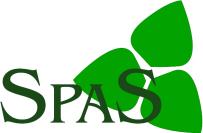Food for life (Web)
This ETP wants to improve welfare and well-being in Europe through research and innovation in the European agro-food industry. It is hosted by the CIAA, the Confederation of the European Food and Drink Industry, which is the voice of the food and drink industry – the first industrial sector, major employer and exporter in the EU.
The ETP Food for Life Vision for 2020 (LINK) and beyond was launched in Brussels on 5 July 2005. The next stage, currently underway, is the development of a Strategic Research Agenda (SRA) (LINK) affording a dynamic strategy for achieving this vision and meeting the innovation challenge, and a detailed Implementation Plan that describes the research, training, education and dissemination requirements needed to fulfil the vision and strategy. The immediate focus is on defining the requirements and priorities for the European Commission’s Framework Programme 7, but in the longer term this focus will be broadened to include nationally-funded initiatives.
As a direct result of the SRA national consultations organized between April 2006 and January 2007, a number of countries have taken the decision to establish National Food Platforms.(LINK)
|
Contact: |
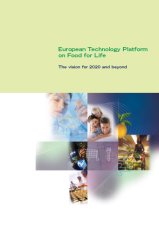 |
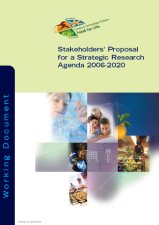 |
Plants for the future (Web)
The European Technology Platform "Plants for the Future" is a stakeholder forum on plant genomics and biotechnology that was initiated by the European Commission on the request of the Brussels European Council of March 2003. This ETP is hosted by EPSO, the European Plant Science Organisation, which is an independent body that represents more than 50 leading Research Institutions from 23 European countries.
“Plants for the Future” wants to improve impact and visibility of Plant Science in Europe. The four challenges for society to which the plant sector can contribute are articulated in the Vision and Research Agenda papers (LINK) as: Healthy, safe and sufficient food and feed, Sustainable agriculture, forestry and landscape, Green products, Competitiveness, consumer choice and governance.
The Technology Platform has expressed the future tasks in the Strategic Research Agenda 2025 (SRA) (LINK): identifying the state of this sector across Europe by developing an information platform, the database of EU-wide research analysed in a “European Map” identifying gaps and overlaps in research at national and European level; discuss with policy makers at national and European level to foster the implementation of the SRA, pointing towards the need for new strategic initiatives and improving trans-national cooperation and coordination among Member and Associate States.
|
Contact: |
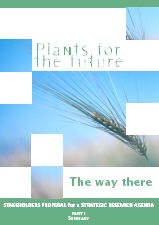 |
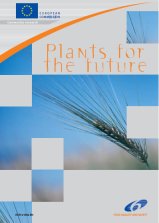 |
Background Info
Technology Platforms:
What is an ETP?
As defined in EURAB 04.010-final [January 2004], a European Technology Platform [ETP] is a major, pan-European mission-oriented initiative aimed at strengthening Europe’s capacity to organize and deliver innovation – strengthening the European-wide innovation process. An ETP will bring together relevant stakeholders to identify the innovation challenge, develop the necessary research programme and implement the results.
As envisaged by the European Commission, the development of ETPs can help to ensure the European investment in R&D rapidly and effectively:
- delivers benefits to the European citizen,/li>
- creates competitiveness for European companies,
- ends the situation in which high EU R&D investment often produces fewer that expected benefits, and
- helps to give shape to the European Research Area [ERA] on a sector-by-sector basis.
In recent years, more than 25 ETPs have been initiated, covering sectors as diverse as Steel, Sustainable Chemistry, Textile and Clothing, Plants for the Future and Large Wing and Fuselage. A number have relevance to the agro-food chain and these will be clustered to ensure optimal exchange of information and best practice and minimal overlap of activities.
More information on all technology platforms can be found under: http://cordis.europa.eu/technology-platforms/home_en.html
On the website of SPAS we have listed some ETPs with a relevance to the food chain. Below you will find the specific link , a short summary and contact details.
Innovation and Research Information
Plan the envisaged project by addressing the questions:
|
|
The proposal form is divided into seven sections. These are:
- Scientific/Technological Objectives, Novelty & Contents
Describe the proposed research and its contribution to addressing the key scientific and technological objectives of the Framework 6 Programme resp. the Framework 7 Programme and the related Thematic Priorities (if appropriate). Justify the originality and progress beyond the state of the art. Make the evaluators curious! - Community Added Value and Contribution to EU policies
Why does the project require European funding as opposed to national funding? It should address problems on a European scale, and not problems only evident on a national scale. What will the project contribute to the support of EU policies? Proposals that include reference to European policies will score higher marks than those that do not. The EU facilitates the research in Europe to compete with other continents. Highlight your research in relation to US, South-America or Asia activities. - Contribution to Community Social Objectives
Will the project improve the quality of life, health and safety or working conditions of EU citizens? What contribution will the project make to improving employment prospects and the development of skills in Europe and your region? Will the project help to preserve and/or enhance the environment? - Economic Impact & Exploitation Potential
Describe the possible contribution to economic growth, in particular the usefulness and range of applications of the project. Demonstrate the quality of the exploitation plans, including the credibility of the applicant to carry out the exploitation of results arising. Include figures and market estimates where appropriate. - Management, Partnership & Resources
Management structure and project approach proposed, in particular the appropriate-ness, consistency, efficiency and completeness of the proposed tasks. In addition, the tools and milestones to be used for monitoring project progress. Demonstrate good communication strategy within the project consortium. The appropriateness of the resources i.e. level and/or type of manpower allocated, travel and any other resources to be used, has to be outlined. In addition, the resources not reflected in the budget. It is essential that you outline what type of proposal you intend to submit to FP6 or FP7. (HERE LINK TO INSTRUMENTS) - Work to be undertaken during the Preparatory Phase
A comprehensive strategy should be outlined, demonstrating realistic goals, objectives, milestones and deliverables. Outline how long will be spent on the activities. Demonstrate the extent to which EC financial support is needed and justified to prepare a complete FP6 or FP 7 proposal. - Project Budget
Make a contact with your National Contact Point well in advance of the proposal writing (see Hot Hints). The NCP will give you support and will check the project budget. This is very important if you have no experience with the figures.
6th Framework Programme
The Sixth Framework Programme (FP6) was the Union’s main instrument for the funding of research in Europe. Proposed by the Commission and adopted by the Council and Parliament in co-decision, it is open to all public and private entities, large or small.
The overall budget covering the four-year period 2003 - 2006 was €17.5 billion, representing an increase of 17% from the Fifth Framework Programme and making up 3.9% of the Union’s total budget (2001), and 6% of the Union’s public (civilian) research budget. There are no national quotas for FP6 funds.
Seven key areas for the advancement of knowledge and technological progress within FP6 have been chosen: genomics and biotechnology for health; information society technologies; nanotechnologies and nanosciences; aeronautics and space; food safety and quality; sustainable development; and economic and social sciences. With a view towards achieving the biggest possible impact, over €12 billion is being allocated to them. Potential participants have to check carefully if their ideas for projects fit within the scope of these priorities and topics. Multidisciplinary proposals addressing several topics may be submitted. Any proposal submitted in response to a call should however have a centre of gravity on one topic open in this call. Thematic Priority Food Quality and Safety had a budget of nearly 850 million €! Under FP6’s food quality and safety theme, 179 projects were selected for funding under the four calls for proposals. Still running projects of the food sector are listed here. (LINK):
More information under: Web or download this document on the TP Food Quality and Safety.
